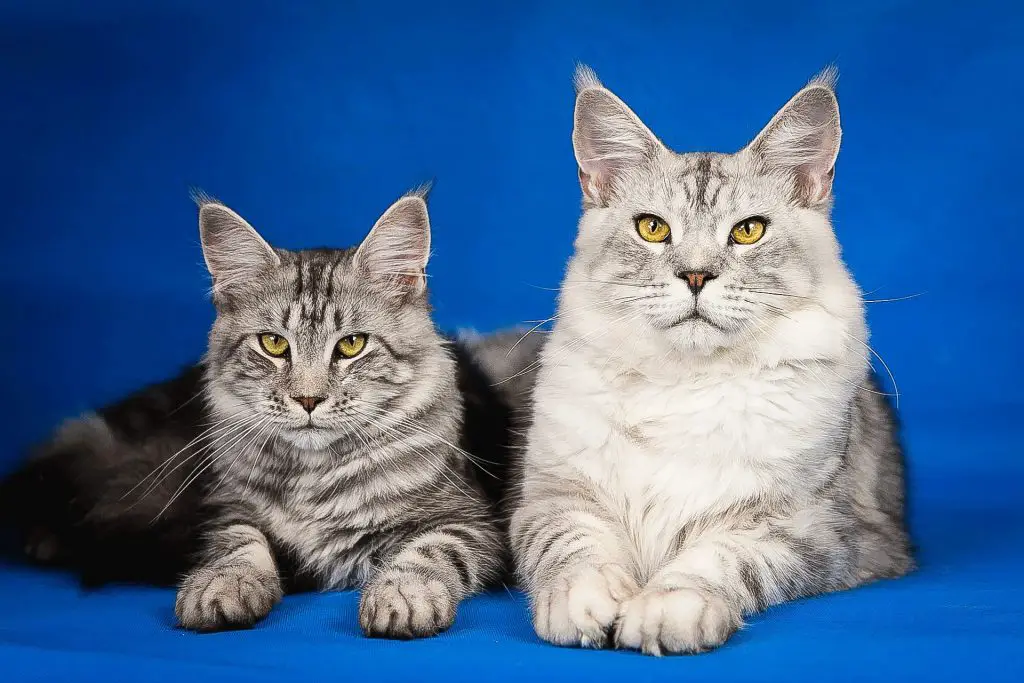Most house cats don’t show many differences between males and females, but some breeds, like the Maine Coon, do. This is why potential Maine Coon owners might prefer one gender over the other, and will wait specifically request that gender of cat from their breeder. Read on to discover the differences between male and female Maine Coons.
Males
The most obvious difference between male and female Maine Coons is their size; males are quite a bit larger at an average of 15-25lbs while females clock in at 10-15lbs. If you want a male, then be ready for a big kitty! Male Maine Coons are also known for being more socially needy and clingy than females, which some people might find endearing and others might find slightly annoying. Just know that if you have a job or obligations that will keep you from the home for most of the day, then a male might not be for you.
Male Maine coons are also a bit more active during the daytime.
Males are also more predisposed to certain genetic disorders than females, such as hypertrophic cardiomyopathy (CHM) and hip dysplasia (due to their larger size).
Females
Aside from being quite a bit smaller than male Maine Coons (closer to the size of an average house cat), they’re also slightly more reserved. Females are less likely to accept strangers as quickly as males but are also more laid back and require less attention. They’re also generally more active during the nighttime, which might be a problem if you’re particularly sensitive to your cat zooming around the house and jumping on your bed at night.
Unspayed female Maine Coons might be a little more expensive than their male counterparts because they can reproduce, and are slightly more sought after in general, perhaps due to being less likely to have a genetic disorder.














